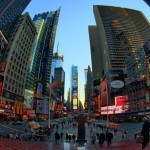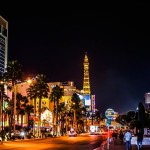Harbin
In China’s frozen northeast, near the border with Siberia, the city of Harbin hosts an annual ice and snow-sculpture festival through the end of February, with massive palaces chiseled from blocks of ice—arrive before dusk to see the temporary edifices before and after they’re bathed in pastel LEDs—and snow sculptures up to 100-feet tall. Later, step into the gilded dining room of Huamei, on the tourist drag Zhongyang Street, to warm up with Russian fare and crisp vodka. Just bundle up, as winter temperatures regularly dip into the negative-teens Fahrenheit. A two-hour flight from Beijing, Harbin is also home to a Siberian tiger preserve and the Byzantine-style Saint Sophia Cathedral. Stay at the Kempinski Hotel overlooking the Songhua River.
Macau
While the island territory of Macau is most famous as a gambling destination (if that’s your style, hit the gaudy-glamorous Hotel Lisboa), a deeper dive reveals Buddhist temples (the hilltop A-Ma), sandy beaches, and tropical architecture left behind by Portuguese colonists (the Baroque structures around Senado Square; Saint Paul’s haunting facade, all that remains of the church after an 1835 fire). The cuisine, a stirring mix of European, African, and Asian elements, is most expertly realized at Hac Sa Beach’s open-air Fernando, with grilled sardines, roast suckling pig, and fried rice, all complemented by vinho verde.The fast ferry takes just under an hour from Hong Kong, but if you choose to stay overnight, the Banyan Tree provides a quiet refuge in the buzzing city.
Hangzhou
There’s a Chinese saying that goes something like “Shang you tiantang, xia you Hangzhou” (“Above there is heaven, below there is Hangzhou”), and the capital of the Zhejiang province, 45 minutes from Shanghai via high-speed train, is justifiably famous for its beautiful scenery, specifically the lush West Lake and pagoda-dotted hills. Hire a wooden boat to explore the lake and the gardens, pagodas, and temples along the shores. The China Academy of Art houses a set of museums, including a fine art museum and a just-opened folk art museum designed by Japanese architect Kengo Kuma, while the privately run T Museum specializes in contemporary art. Like many Chinese cities, Hangzhou is known for its distinctive cuisine (there’s even a museum dedicated to Chinese food), lighter, less spicy fare like sweet-and-sour West Lake carp, beggar’s chicken (wrapped in lotus leaves and clay-baked), and freshwater shrimp prepared with Dragon Well tea leaves. Set amid ponds and lagoons on West Lake, the villas and suites of the local Four Seasons draw inspiration from Chinese design and architecture; the hotel spa’s Moonlight Tide Massage incorporates qigong movements.
Xishuangbanna
Near the border with Laos and Myanmar, the Yunnanese region of Xishuangbanna has a more tropical and Southeast Asian vibe than the rest of China—look for plates of pineapple fried rice; sticky rice cooked in bamboo tubes; and, for the adventurous, deep-fried bee larvae. Every April, the city hosts a “water-splashing festival” in which locals and visitors douse each other as a cleansing ritual to mark the new year of the local Dai ethnic group. But any time of year you can glimpse the rare Asian elephant at the Mengyang Nature Reserve. Within the park, Wild Elephant Valley’s tree houses let overnight guests go eye to eye with the giant pachyderms. For more luxurious surroundings, the new Anantara Resort has tropical gardens and restaurants specializing in Dai and northern Thai cuisine.





















